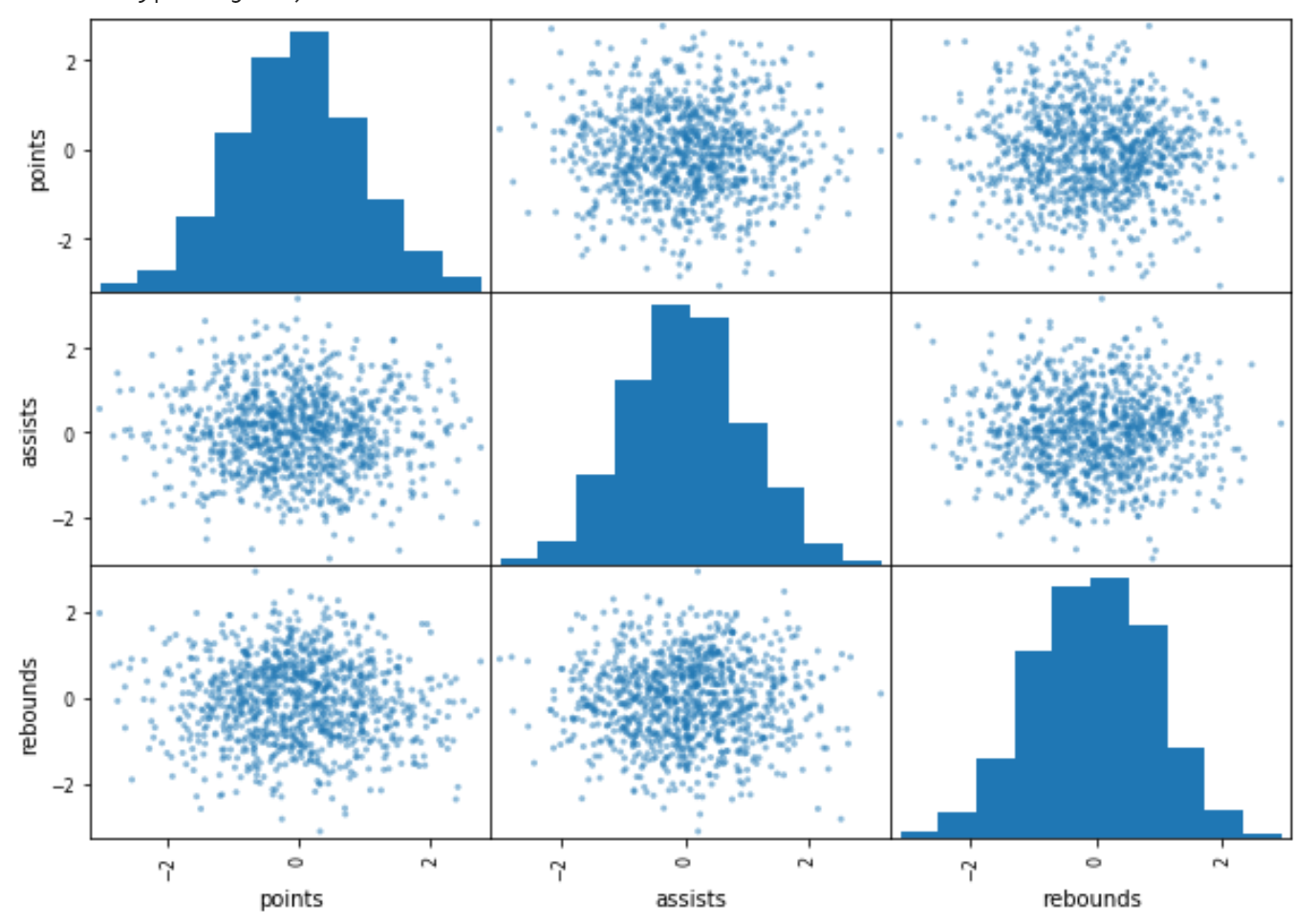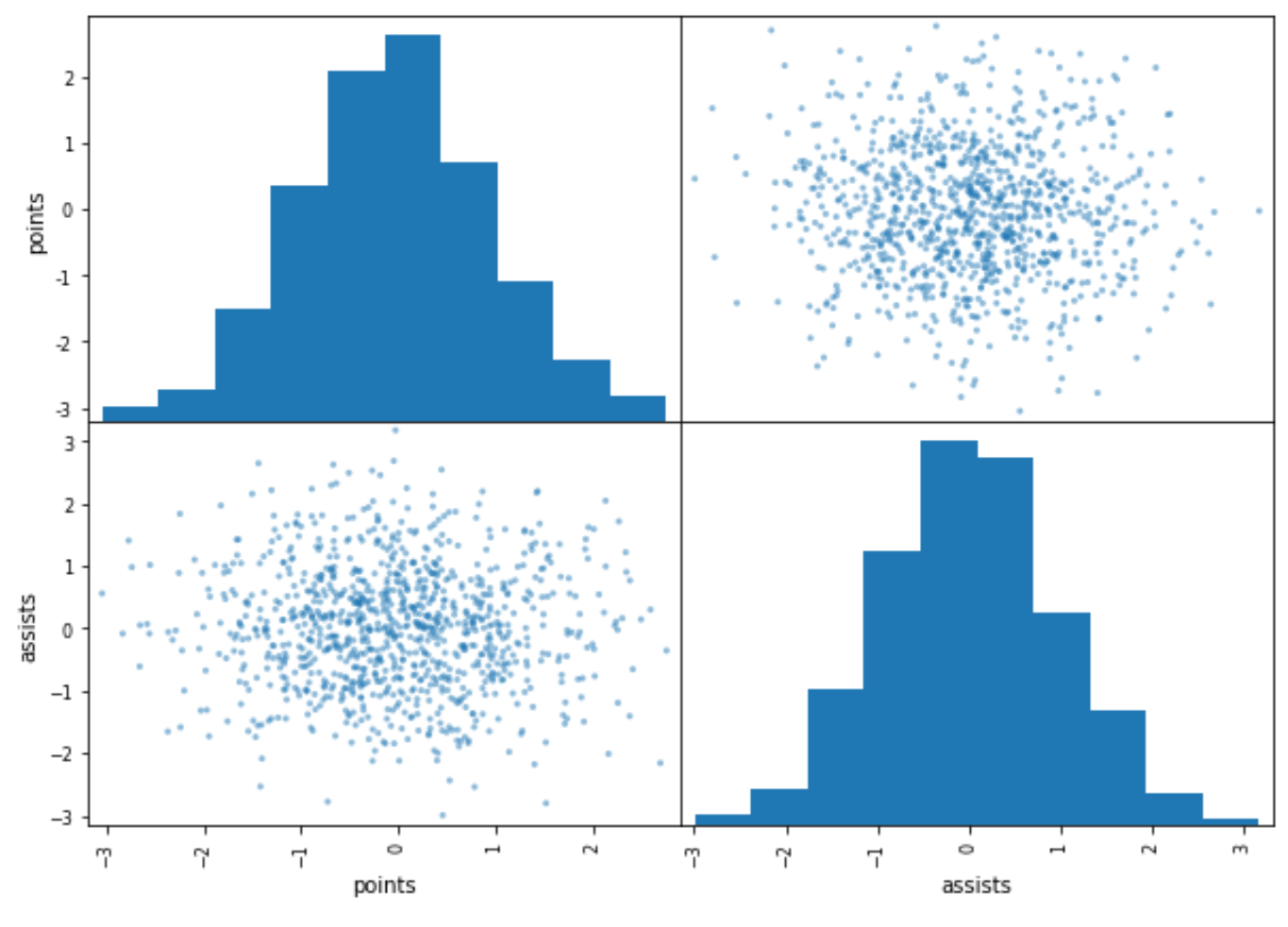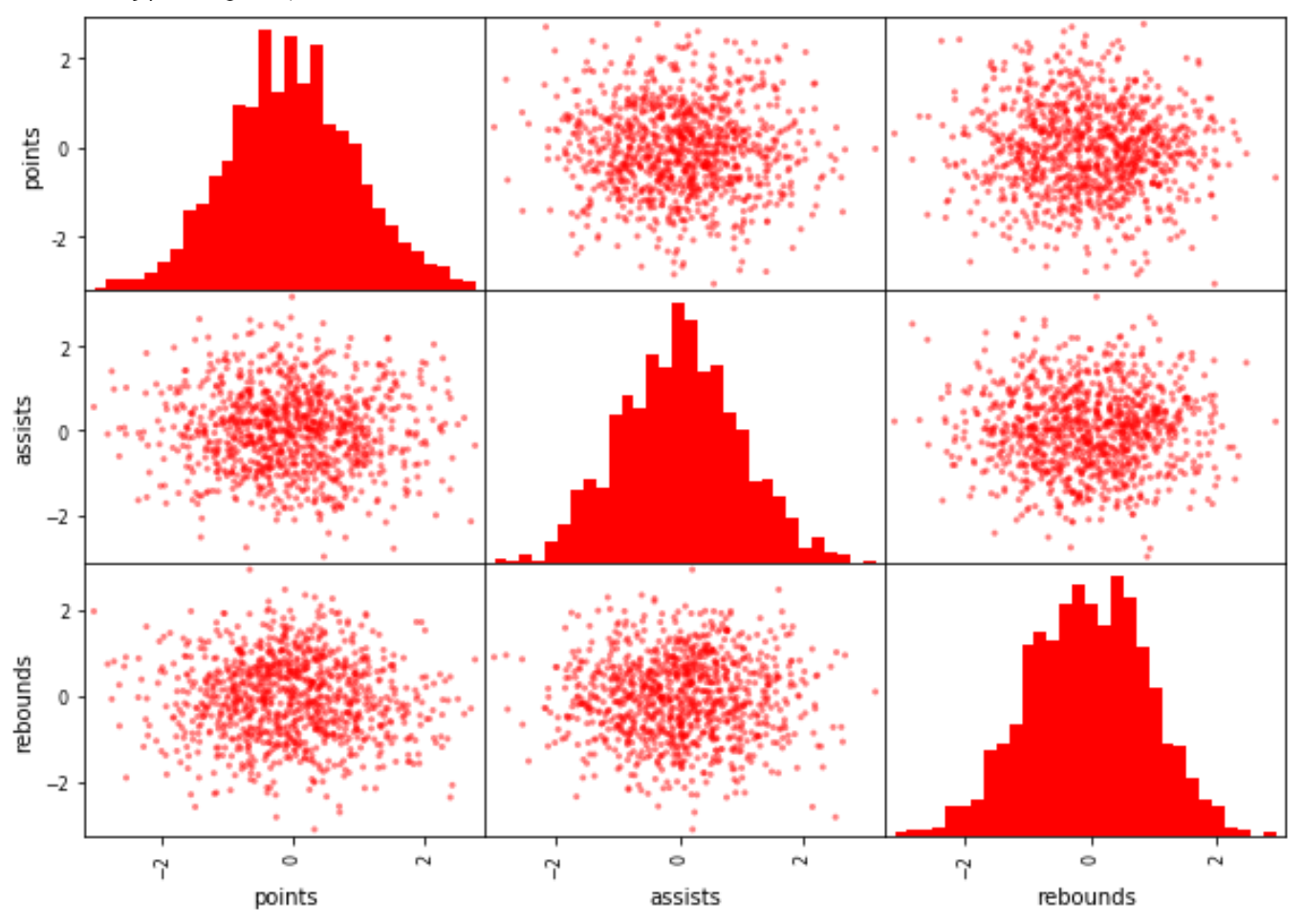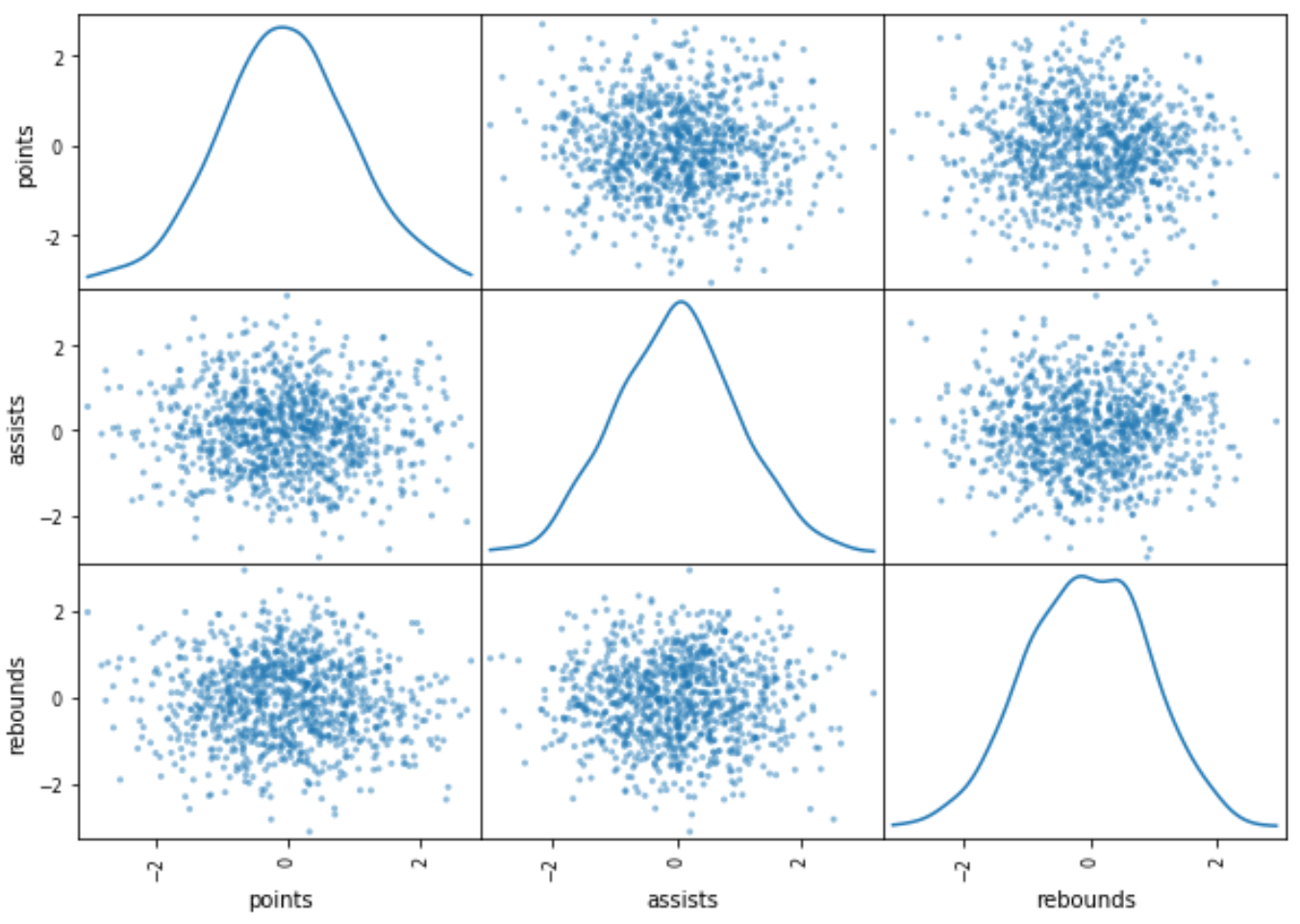A scatter matrix is exactly what it sounds like – a matrix of scatterplots.
This type of matrix is useful because it allows you to visualize the relationship between multiple variables in a dataset at once.
You can use the scatter_matrix() function to create a scatter matrix from a pandas DataFrame:
pd.plotting.scatter_matrix(df)
The following examples show how to use this syntax in practice with the following pandas DataFrame:
import pandas as pd import numpy as np #make this example reproducible np.random.seed(0) #create DataFrame df = pd.DataFrame({'points': np.random.randn(1000), 'assists': np.random.randn(1000), 'rebounds': np.random.randn(1000)}) #view first five rows of DataFrame df.head() points assists rebounds 0 1.764052 0.555963 -1.532921 1 0.400157 0.892474 -1.711970 2 0.978738 -0.422315 0.046135 3 2.240893 0.104714 -0.958374 4 1.867558 0.228053 -0.080812
Example 1: Basic Scatter Matrix
The following code shows how to create a basic scatter matrix:
pd.plotting.scatter_matrix(df)

Example 2: Scatter Matrix for Specific Columns
The following code shows how to create a scatter matrix for just the first two columns in the DataFrame:
pd.plotting.scatter_matrix(df.iloc[:, 0:2])

Example 3: Scatter Matrix with Custom Colors & Bins
The following code shows how to create a scatter matrix with custom colors and a specific number of bins for the histograms:
pd.plotting.scatter_matrix(df, color='red', hist_kwds={'bins':30, 'color':'red'})

Example 4: Scatter Matrix with KDE Plot
The following code shows how to create a scatter matrix with a kernel density estimate plot along the diagonals of the matrix instead of a histogram:
pd.plotting.scatter_matrix(df, diagonal='kde')

You can find the complete online documentation for the scatter_matrix() function here.
Additional Resources
The following tutorials explain how to create other common charts in Python:
How to Create Heatmaps in Python
How to Create a Bell Curve in Python
How to Create an Ogive Graph in Python